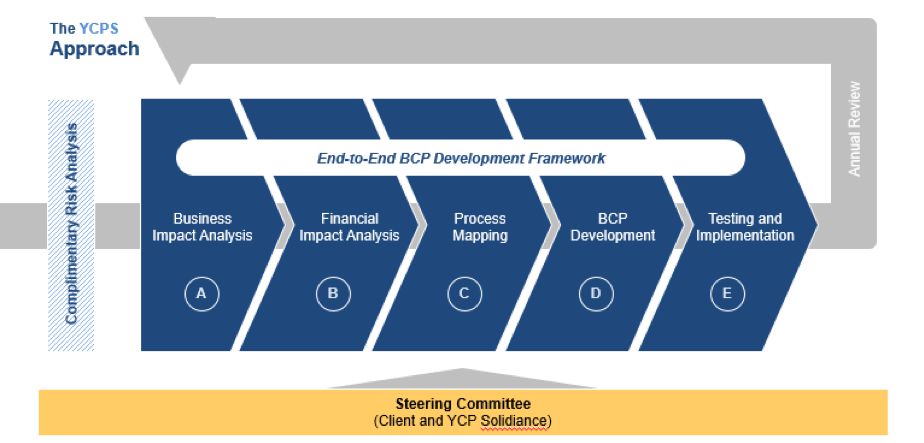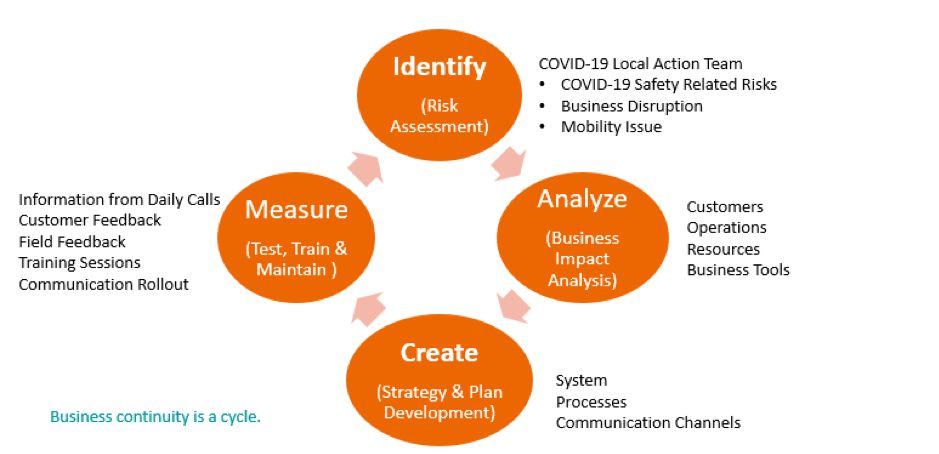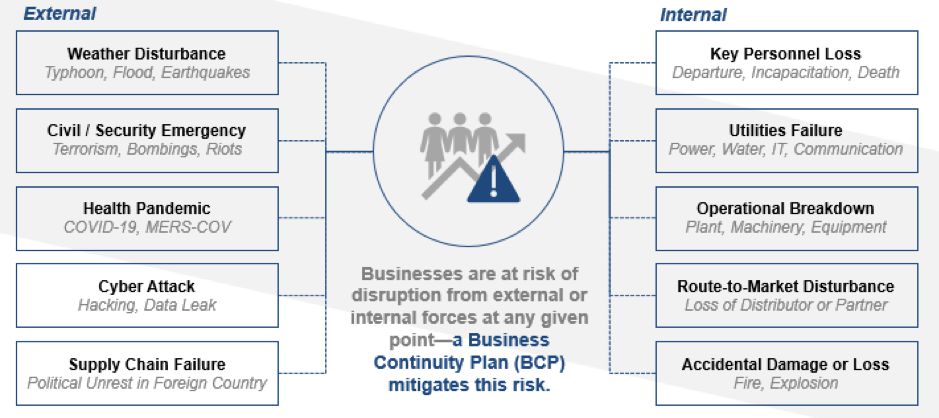Economic activities in the Philippines have been disrupted by the spread of the pandemic, tapering growth prospects which may lead to long-term and considerable economic implications. YCP Solidiance survey recorded that 93% of businesses in the Philippines are no longer expecting growth as of April 2020, although the majority see that the economy will recover in 2021 onwards.
Through the webinar, titled “Business Continuity in the Philippines Healthcare Sector”, our Partner, U-Yun Wong, along with Mike Tan, the President and Managing Director of Siemens Healthineers in the Philippines, Christian Bestler, the CEO of Vigos Ventures, and Lih Chyun Yeong, the President of Healthcare Technology Association of the Philippines & Managing Director of B. Braun Medical Supplies Inc., shared the principles and methodology in building a robust Business Continuity Plan (BCP), especially for the healthcare sector in the country to mitigate and recover from disruptions caused by the pandemic.
Business Continuity Planning
With external and internal risks facing businesses, the need for a BCP is stronger than ever. BCP is tailored for each firm to ensure operational continuity, curtail disruption impact, reduce liabilities, and to protect and preserve shareholders’ value.
![BCP Philippine Healthcare]()
Source: YCP Solidiance’s Research and Analysis
According to our survey, BCP prevalence in the Philippines is considerably high, with 71% of businesses already have BCP in place. The average readiness of businesses in the Philippines to the COVID-19 pandemic (out of 10) is proven to be higher for firms with a BCP (5.9), compared to the ones without BCP (5.0).
Source: YCP Solidiance’s Research and Analysis
YCP Solidiance provides a holistic approach to business continuity planning which involves at least 6 steps. The process begins with a complimentary assessment of a firm’s external and internal risks, followed by end-to-end BCP development engagement. The results of the business impact analysis are then evaluated and translated into financial impact analysis for every level of disruption that occurs.
What follows is the mapping of these processes’ corresponding dependencies to determine the critical paths to be prioritized. The next step will be the development of the BCP itself, providing a step-by-step playbook to be followed. The stress-testing will be the final step of the BCP, which YCP Solidiance recommends to be done through a live test and/or a rehearsal with key personnel.
Key Takeaways for Healthcare Providers
The webinar presented a case study to show how BCP successfully helped a company in the Philippines healthcare sector during this pandemic.
Source: Siemens Healthcare Inc.
Mike Tan from Siemens Healthineers showed how their company deals with the pandemic. To keep providing the best possible care for patients, the company partnered up with local airlines to deliver products, strengthen clinical offerings and identified the COVID-19 patient pathway, monitor the health & safety of employees, and also ensure the availability of customer services.
Source: Siemens Healthcare Inc.
The key takeaways for healthcare solutions providers are to be transparent in communications, be present for their customers, and be true to the company’s purpose and value. This case study also showed the importance for business to have a reliable and competent team to take action in times of urgency, to be flexible and adaptive to the “new normal”, and to be ready for digitization.




